- Administrator
- Albums and Singles

Read More
- Administrator
- Albums and Singles

Read More
- Administrator
- Albums and Singles

Read More
- Administrator
- Albums and Singles
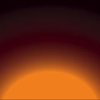 Tepid and, at times, hesitant, James Blackshaw's latest record for Young God is a disappointment. For much of All is Falling he and his band work diligently, trying to weave Blackshaw's erudition into something unique and captivating. Unfortunately, their success is all too infrequent and what results is an unsatisfying collection of stoic songs.
Tepid and, at times, hesitant, James Blackshaw's latest record for Young God is a disappointment. For much of All is Falling he and his band work diligently, trying to weave Blackshaw's erudition into something unique and captivating. Unfortunately, their success is all too infrequent and what results is an unsatisfying collection of stoic songs.
More than halfway through the album, during "Part 6," James and violinist Fran Bury count out loud, inviting us to consider the song's rhythm with them. "One, two, three, four, one-two-three-four-one" they count, their voices merging into a fugue of numbers until the sequence becomes confused: "One, two, three, four, one-two-six-three-four." These are the only words spoken on the album, but they provide the best insight into All is Falling's spirit and scope. Drawing attention to a song's technical elements so near the album's climax tells me Blackshaw is interested in highlighting the technical aspects of his music, even to the exclusion of other features. Many of the album's eight parts sound more like exercises than songs, and all of them are modestly paced tapestries that call attention to the way the instruments interact rather than to the musical result. OnThe Glass Bead Game, Blackshaw deftly smeared the line between cello and guitar, voice and flute, etc., until they disappeared into each other and created something newer, bigger. On All is Falling he accomplishes this same effect, but to a greater degree and for a much longer duration; the result is more tedious than mesmerizing.
His melodies are frequently circular and the dynamic variety prescribed for each instrument is such that it imitates Blackshaw's 12-string playing on previous albums for Tompkins Square and Bo'Weavil. Melodies and harmonies came in waves on those records, rhythms pulsed vaguely, and, as a result, time stretched in unexpected and pleasing ways. And James played the guitar like a man possessed, showcasing it and his melodies while simultaneously challening himself as an instrumentalist. On All is Falling none of the instruments speak up or take the lead, and none of the songs feature a melody strong enough to be memorable or affective. Besides Fran Bury, who worked with James on both The Cloud of Unknowing and Litany of Echoes, All is Falling features multi-instrumentalist Charlotte Glasson and cellist Daniel Madav. Both musicians play exquisitely, but neither is allowed the freedom necessary to make unique or notable contributions. In fact, whatever peculiar talents or unique voices they might have are squelched by Blackshaw's fixed tempos, flat dynamics, and even temperament. Consequently, little emotion finds its way to the album and any conceptual reward that might lie in waiting is left undiscovered for want of interest.
Both "Part 7" and "Part 8" help mix things up a little, but they offer too little, too late. The former alludes to a fiery, largely dormant spirit boiling beneath Blackshaw's studious arrangements, but it fails to produce any smoke and falls instead into the unexpected and conspicuous "Part 8." That song is a strange and completely out-of-place electric experiment that would fit perfectly on a collection like Ohm: The Early Gurus of Electronic Music; here it sounds like an expression of frustration. It is another cold and static song, but with a different voice. It does manage to catch my attention more than some of the preceding songs, though that could be due to its sticking out like a sore thumb. I know James Blackshaw is a talented and imaginative composer; his previous albums have proved that sufficiently. What those albums have, and what All is Falling is missing, is a strong emotional context and a more unrestrained James Blackshaw at the helm. If James wants to highlight his talents as a player and composer more, he can do it without showing so much restraint. I'd like to see him show off a little more, both technically and personally.
samples:
 
Read More
- Administrator
- Albums and Singles
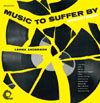 Leona Anderson's mock-pompous operatic voice can provoke amusement and nauseous grimacing. Music To Suffer By is as beguiling as a jar of pickled walnuts: nectar for a few people, odd and repulsive to others. Either way, this re-mastered album shouldn't be swallowed in one sitting.
Leona Anderson's mock-pompous operatic voice can provoke amusement and nauseous grimacing. Music To Suffer By is as beguiling as a jar of pickled walnuts: nectar for a few people, odd and repulsive to others. Either way, this re-mastered album shouldn't be swallowed in one sitting.
Leona Anderson probably would not be allowed to exist for long in our current saturation-style media. Rather, she would be hounded to reveal the intent behind her intense caterwauling until any mystery and subtlety had been stripped from her work. Luckily she performed in a time of less viral exposure and more innocence. Thus, acquaintances such as comb player Paul Bacon and Edie Adams can only say they suspect Anderson knew she was being funny. Anderson was born in St Louis and her brother Max featured in some of the earliest known cowboy films, as Bronco Billy Anderson. She apparently attempted opera singing before landing screen roles in movies such as In The Park and a short spoof of Rudolph Valentino's Blood and Sand called Mud and Sand (with Stan Laurel as "Rhubarb Valentino"). After hearing her sing, the oft-repeated joke is to wish that she had stayed in silent cinema.
In the mid-1950s Anderson recorded a tune called "Fish" accompanied by Bill Baird (the puppeteer from The Sound of Music) on tenor tuba and Tony Burrello, who recorded his own single "There's A New Sound (The Sound of Worms Eating Your Brain)" on calliope, an instrument associated with steamboats. It's a pity that "Fish" isn't included here since it did lead to the making of Music To Suffer By. "Fish" caught the ear of Ernie Kovacs who featured it in a running TV gag with him standing beside a suit of armor and opening the visor for Anderson's voice to come bellowing out. She also appeared on his show and that led to the recording and original release of the album by Unique Records.
Trunk Records do their usual valuable service to collectors with this remastering by Jon Brooks at NewyattSounds. Anderson's phrasing and the choice of instruments to accompany her come over very well. The other obvious joke is that she has never sounded better (and worse). Her gently-strangled-to-death versions of standards such as "I Love Paris" are fine but the truly worthwhile pieces are original compositions which use sincere logic and gusto to create something not just funny but quite bizarre. Perhaps that is why the mesmerizing "Rats in My Room" makes me think of Kafka and the cheese-themed "Limburger Lover" brings to mind the notorious butter scene from Last Tango in Paris.
Leona Anderson is in the pantheon of skillful badness along with such cracked cultural pleasures as Les Dawson's piano playing, the cathartic wildness of the Legendary Stardust Cowboy, and the musical bicycle antics of the young Frank Zappa. The single bang just after the end of "Indian Love Call" suggests that someone finally couldn't take it anymore and shot her, although she actually lived to the age of 88 and passed away in California on Christmas day, 1973. Whether she is described as demented, hilarious, or torturous, Anderson will be remembered long after the majority of all the ubiquitous auto-tuned dullard singers are buried (dead or alive) and forgotten.
samples:
Read More
- Administrator
- Albums and Singles
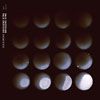 After the two most recent Jesu works had returned to the heavy guitar sound the project began with, Justin Broadrick saw fit to separate that project into two distinct entities: Jesu for heavy guitar music, and Pale Sketcher (named for the Pale Sketches compilation) for the more ambient and electronic pop sounds. Considering that the two most electronic Jesu releases are among my favorites from that band (the split with Envy and Why Are We Not Perfect), I had high hopes for this project. After hearing it, I think there's a lot of potential with Pale Sketcher, though I don't know if this album demonstrates that inherently.
After the two most recent Jesu works had returned to the heavy guitar sound the project began with, Justin Broadrick saw fit to separate that project into two distinct entities: Jesu for heavy guitar music, and Pale Sketcher (named for the Pale Sketches compilation) for the more ambient and electronic pop sounds. Considering that the two most electronic Jesu releases are among my favorites from that band (the split with Envy and Why Are We Not Perfect), I had high hopes for this project. After hearing it, I think there's a lot of potential with Pale Sketcher, though I don't know if this album demonstrates that inherently.
Being that it is essentially a Jesu compilation remixed, I think it's a hard release to try and gauge how this project will work out.Those aforementioned splits Broadrick did as Jesu were mostly electronic, but when the more traditional Jesu sound appeared, the juxtaposition is what I loved.On both songs from the Envy split, the heavy riffs came in at just the right time, mixing the guitar sound of Jesu with the electronic, almost pop structure that dominated the songs.I worry that this will end up stripping TOO much of the rock sound away from Broadrick's work.
Three of the songs were available last year in the Japanese 2CD reissue of the original Pale Sketches, "Don't Dream it (Mirage Mix)," "The Playgrounds are Empty (Slumber Mix)," and "Supple Hope (2009 Mix).""Don't Dream It" is improved, in my opinion, by the removal of the Rocky Horror samples and a greater emphasis on the grimy bass line and beats."The Playgrounds are Empty" strips most of the original track down, leaving only a rudimentary rhythm and hazy, sparse movements of synth, creating a warm, gauzy, drifting sound that is absolutely beautiful."Supple Hope" is also a more skeletal track, but leaves Broadrick's vocals in the open, rather than heavily processed in the original version.
"Can I Go Now (Gone Version)" follows a similar approach as "Playgrounds," stripping much of the track bare, including most of the vocals, to the point where it bears little resemblance to the original other than one melodic synth line.Considering this was one of my favorites on the original release, I feel a bit let down by this funereal take on what was more of an uptempo synth pop piece."Plans That Fade (Faded Dub)" goes the literal "dub" route, with a reggae inspired rhythm and vocals pushed into plate reverb hell, plus lots of effects and experimentations all around.
I think that, for the most part, the "vocal" tracks are the ones I gravitated towards on the original Pale Sketches album, and thus I've grown very familiar and fond of them in the three years since that album came out.Hearing them redone just doesn't feel quite right, since I just constantly compare them to what I'm used to.With the exception of "Can I Go Now," they're all strong on their own and will perhaps grow on me more over time, but at least at this stage feel like they lack the identity the original versions developed.
The instrumental tracks fare better in my opinion, mostly because I haven't spent as much time with the originals to be prejudiced against the remixes."Wash it All Away (Cleansed Dub)" keeps the soft synths from the original, but retains a rather mellow feeling throughout, dialing the beats back in intensity and turning the distortion down some as well, giving a much more chilled feel than the previous version.The emphasis on breakbeats that fill "Tiny Universes (Interstellar)," along with the reverb swells actually reminds me a lot of Re-Entry/Babylon Seeker-era Techno Animal, when the focus was on the beats and atmospheres rather than distortion and grime.
I do worry a bit that Broadrick will focus TOO much on the electronic elements of his previous works with Pale Sketcher, possibly leaving the vocals and guitar completely out of the mix. Most, if not all the guitar parts have been removed or processed far beyond identification, and most of the vocal appearances are soaked in effects.Guitar and vocals are what drew the line between Jesu and Godflesh for me, and many others as well, and I think most consider those defining marks of Broadrick’s sound.With the sole focus on synths and samples, Pale Sketcher might not develop the same iconic status that his other projects have.However, considering these are "demixes" of other tracks, perhaps it is the symbolic "tear it down to rebuild" gesture that Pale Sketcher is beginning with.I just hope any future releases lean more towards Why Are We Not Perfect or the two tracks from the Envy split, because if so, Pale Sketcher may end up rivaling Jesu in my opinion.
samples:
 
Read More
- Administrator
- Albums and Singles
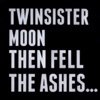 With a few exceptions, most of Mehdi Ameziane's recording career can be broken down into two simple categories: "great albums" and "albums that would have been great if they had been pared down a bit." Then Fell the Ashes... happily falls quite squarely in the former category. There is definitely some evidence here that Mehdi is continuing to evolve and improve, but the more important thing is that this is one of the most perfect distillations of everything that makes TwinSisterMoon so unique and wonderful. This is one of my favorite albums of 2010.
With a few exceptions, most of Mehdi Ameziane's recording career can be broken down into two simple categories: "great albums" and "albums that would have been great if they had been pared down a bit." Then Fell the Ashes... happily falls quite squarely in the former category. There is definitely some evidence here that Mehdi is continuing to evolve and improve, but the more important thing is that this is one of the most perfect distillations of everything that makes TwinSisterMoon so unique and wonderful. This is one of my favorite albums of 2010.
I have always preferred the darkly psychedelic drone side of Ameziane's work to his folkier pieces, so I was quite pleased to discover that the bulk of Then Fell the Ashes... is devoted to his more quasi-ritualistic, otherworldly, and abstract leanings.In fact, the entire second side of the record is filled by one such work, the overwhelmingly beautiful 25-minute title piece.It is hard to make me rabidly enthusiastic about drone music, but "Then Fell the Ashes..." is just staggeringly perfect in so many ways: there is a head-spinning amount of textural activity occurring, it is hugely powerful, it's filled with great instrumental passages, and it all seamlessly flows from crushingly dense to ghostly to fragilely melancholy without any lapses in majesty or vitality.The sad, oddly-timed cascade of guitar and piano notes near the middle stood out as particularly sublime, but I was also very impressed with how it unexpectedly evolved into an actual song at the end, like the closing credit music of an especially hallucinatory nightmare. I'm a big fan of unconventional song structures that aren't clumsy or jarring.
While "Then Fell the Ashes..." is certainly pretty stunning from a compositional standpoint, I was equally struck by Mehdi's skill as a producer and arranger.He weaves together an absurd number of tracks and instruments here, all of which are shimmering, flanging, rattling, swelling, or fading in some way, yet it never sounds cluttered or muddy, just gritty, psychotropic, and enveloping.Making drone music sound visceral, organic, and detached from our time is an art form all its own—I can't fathom how long it must have have taken him to record and mix such a piece.
The six pieces on the first side maintain a similar level of excellence.My favorites are (predictably) the more drone-themed ones, particularly the massive "Black Nebulae," which almost seems to breathe in an ominously Lovecraftian way. "The Big Sand" is equally wonderful, though markedly less unsettling.In fact, the coda is almost pastoral, as the howling pagan pipes give way to quivering organs (or treated flutes), field recordings of water and birds, and an elegantly melodic acoustic guitar motif.
The four brief "songs" are pleasant enough in a "tape hiss-damaged recording of Vashti Bunyan" kind of way, but they don’t pack quite the wallop of their lengthier, more maximalist counterparts.I'm glad they are included though; as they're essential from a sequencing perspective: 18 solid minutes of heavy psychedelic drone would be exhausting.The occasional oases of space and intimacy go a long way towards heightening the impact of the album's denser pieces.Also, I am pleased that the neo-folk songs are less oppressively sad than usual ("Trailer" could actually be described unironically as catchy).I suspect Mehdi is making an effort to broaden to expand his mood palette a bit and it seems to be an experiment that is working very well so far.
I expect to like every TwinSisterMoon release at this point, but Then Fell the Ashes... exceeded my expectations in every way: it sounds awesome, it doesn’t resemble anyone else, the melodies are great, the heavy parts are elephantine, and it all flows beautifully.Also, it seems like Mehdi is becoming more skilled at finding the ideal lengths for his songs on a case-by-case basis.This is a near-flawless and remarkably listenable album. Anyone curious about checking out TwinSisterMoon or Natural Snow Buildings would be wise to start here.
samples:
Read More
- Administrator
- Albums and Singles
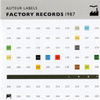
Although Factory Records has certainly earned its iconic status, most of the label’s best work was released during its early years. While always adventurous and unpredictable, the label began to drift towards decadence, questionable whims, and trends doomed to rapid obsolescence as the '80s unfolded. To his credit, curator James Nice manages to unearth a couple of long-forgotten gems from this dicey period, but most of the songs collected here succeed only as curiosities or mere footnotes in the evolution of contemporary dance music.
 
 
James Nice begins his excellent liner notes with a very telling 1987 quote from Tony Wilson: "You see, I'm out of touch with the street, in that between '76 and '81 I knew everything that was being released and I saw a different band every night.But that part of your life passes, and now I rely on other people to tell me what's happening."Unfortunately, the people around Wilson were pretty sucked in by House music and DJ culture by this time, a scene that Tony (and myself) never cared for.That shaky state of affairs led to quite an eclectic and unfocused release schedule, as a trickle of albums from the label's more established names was bolstered by whatever 12" dance singles A&R chief Mike Pickering was able to sneak through the cracks.
The album starts off in fairly strong fashion with New Order ("True Faith"), A Certain Ratio ("Bootsie"), and Happy Mondays ("24 Hour Party People") in rapid succession.Unfortunately, anybody who would be interested in a Factory Records compilation is probably already quite (overly?) familiar with those songs—I know I am.Consequently, the success of the album is largely dependent on the more obscure pieces that make up its remainder.Also problematic is the near-deranged stylistic variety on display.It's certainly surprising and fascinating to hear a virtuousic Spanish guitar piece by Durutti Column on the same album as the unfortunate early hip hop of Meat Mouth, but it is impossible to imagine a single person liking both.Incidentally, the best thing about this release is probably the Vini Reilly quote in the liner notes about how he feels that no one cares about his albums because they simply aren't very good ("I deserve that disappointment.").
Of the lesser-known songs, the highlight is definitely The Wake's shimmering and shoegazey "Furious Sea."Notably, it was to be their last release for the label, as they had a falling-out over cover art (not "Factory" enough) and poor promotion, which motivated them to relocate to the much beloved/maligned Sarah Records.I was also quite fond of Fadela's funkily exotic "N'Sel Fik," which completely blind-sided me (I did not know that Factory delved into Algerian Raï).I'm still on the fence about Miaow's breezy and jangly C86 pop, but I'm certainly glad that I heard it, as I never saw that as a genre that could successful incorporate yodeling before.I stand corrected.Unfortunately, neither of those artists stuck around either.Neither did The Railway Children, whom Wilson was hoping would become the next Smiths.
Sadly, the rest of the album veers between forgettable, mediocre, and hopelessly dated.That said, James Nice is probably the ideal person to have compiled this album, as he is both the author of Shadowplayers: The Rise and Fall of Factory Records and the owner of LTM, who have reissued much of the Factory catalogue.He did an admirable job assembling entertaining quotes and contextual information for all of the bands here, but 1987 was simply not one of Factory's best years creatively (yet it was a huge year financially, thanks to New Order).Aside from a few songs, this compilation will probably only be of interest to Factory completists and dance music historians (due to the inclusion of Arthur Baker and Quando Quango).Still, I suspect this collection is dramatically better than a Factory Records 1988 or 1989 retrospective would be.I hope neither of those is in the works.
Samples:
- The Wake, "Furious Sea"
- Durutti Column, "Catos con Guantes"
- Fadela, "N'Sel Fik"
Read More
- Administrator
- Albums and Singles
 Apparently the penultimate installment in the long-running series of compilations from Sub Rosa, this volume continues the tradition of putting some of the bigger names (Z'ev, Stephen O’Malley) with some newer and up and coming artists (Torturing Nurse, Robert Piotrowicz), but this time with a seemingly stronger bent towards contemporary "noise," which is a good thing.
Apparently the penultimate installment in the long-running series of compilations from Sub Rosa, this volume continues the tradition of putting some of the bigger names (Z'ev, Stephen O’Malley) with some newer and up and coming artists (Torturing Nurse, Robert Piotrowicz), but this time with a seemingly stronger bent towards contemporary "noise," which is a good thing.
While the "bigger names" from the Japanese noise scene, such as Merzbow and Masonna have already been represented in these compilations, there sits nicely towards the end of the first disc a block of tracks that will make any fan of the genre giddy.The segment begins with an early track from Kohei Gomi, better known as Pain Jerk.Recorded in 1993, "Aufheben" demonstrates that even at this early stage he was defining his sound through jerky, quick cuts and edits, but the penchant for rhythmic loops he later refined isn't quite in place yet.The double dose of Hijokaidan and the Incapacitants back to back made me quite happy, and reminded me of that sequencing of the two bands on the classic Japanese/American Noise Treaty, which is what attracted me to the genre some 15 years ago.The Hijokaidan track "Untitled" is from 1994 and clocks in at nearly 12 minutes and captures the core trio in their prime:T. Mikawa's shrill, enveloping electronic noise, Jojo Hiroshige's abused guitar squall, and Junko’s intentionally abrasive screams.Unlike their traditional "harsh noise wall" approach, there’s some variation and almost rhythms to be found here.
Mikawa and co-conspirator Fumio Kosakai follow that up with the Incapacitants' "Shall We Die?" from 1990, a slightly more restrained sound from them of lost shortwave radio static and buzzing oscillator leads.While at first it sounds like a frozen wall of noise, a closer inspection reveals a microcosm of sound and activity at work.It sounds exactly like the Incapacitants, and any good fan would be annoyed if it didn't.Rounding out the dose of harshness is the newer Chinese band Torturing Nurse, who delivers a dynamic, violent collage of feedback and overdriven tones that definitely sounds influenced by the Japanese masters with "Yes or No", but with a feeling all their own.As if to reinforce the point that not all electronic music from Asia is raw noise, Sachiko M’s "2808200" ends the subset of tracks with a sterile, minimal study of test tones via sampler, resulting in a sparse, yet compelling piece that is the polar opposite of what preceded it.
A briefer study of the American noise artists opens the second disc, first with a 1980 performance by Z'ev, a battering sprawl of metal percussion and the decay of industrial civilization that sounds as fresh today as it did 30 years ago. The Daniel Menche piece "Fulmination" comes from unknown sources, but is a slow, dark trudging work of maxed out bass frequencies and a subtle, rhythmic thump that eventually transforms into what sounds like trains or mechanical crashes in a piece that takes its time in its slow development and structural variations.Contrasting Menche's 12 minute mediation, John Wiese contributes a 2 minute blast of punk noise in "New Wave Dust," full of abrasive laptop tones and jump edits that strongly display the more chaotic, unpredictable flavor of noise.
John Duncan's "The Nazca Transmissions #2" is a glassy, creepy pastiche of sound that, whether or not sourced from the actual Nazca lines in Peru and then summarily cursed in their production (according to the liner notes), has a disturbing otherwordly quality that speaks for itself.Stephen O'Malley’s "Dolmens & Lighthouses" unsurprisingly piles on the low frequencies, but is a tonal, minimalist digital composition of haunting sounds that feels connected conceptually to Sunn O))), but has an identity all its own.Polish artist Robert Piotrowicz's "Lincoln Sea Ice Walk" uses his love of modular analog synths to sculpt a layered, dense wall of sound that is slow, but glorious in its development.
While this edition does stay closer to the noisier end of the spectrum, it by no means fully defines the set.Speedcore, the spastic descendant of gabber is represented by "Virus" courtesy of The Pain Barrier/Rico Schwantes.Keeping the 909 thump and AK-47 tempos of the genre but removing the techno and house music clichés and replacing them with more dissonant, abrasive textures goes a long way, resulting in a more refined listening experience that still thrashes.
The earlier artists are not as represented here, arguably because their work has been covered rather well in previous installments of this series.Henry Cowell's "The Banshee" predates many other studies in the avant garde of the piano, here from a 1957 recorded performance.The traditional sound of hammered strings is present, but the roaring reverberations and scraped strings overshadow the notes and strongly represent the titular terrifying spirit.Dick Raaymaker's "Piano-forte" from 1960 feels like the natural follow-up, but is an even further abstraction of the sounds of the piano, here cut up and spliced into disorienting, chaotic bursts of sound.
While it might be somewhat less diverse than the prior volumes of this series, the strength of the mostly exclusive noise pieces caused me to instantly fall in love with it.Coupled then with the lesser-known artists representing the other genres of electronic music, the result is a brilliant blend of the familiar and the new that puts this as probably my favorite installment thus far.
samples:
- Henry Cowell - "The Banshee"
- Hijokaidan - "Untitled"
- Stephen O'Malley - "Dolmens & Lighthouses"
 
Read More
- Administrator
- Albums and Singles
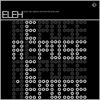 The third in a series of three releases (completing the arc that began with Retreat and Return, both released simultaneously last year), this piece also formed the basis of Eleh’s one and only live performance earlier this year at Mutek. Diverting from the usual pursuit of pure tone, Repose sees Eleh adopting a grittier, grainier palette of sound in addition to those ethereal sound waves which dominate the rest of the releases. This is a bewitching but regrettably short experiment with positive results.
The third in a series of three releases (completing the arc that began with Retreat and Return, both released simultaneously last year), this piece also formed the basis of Eleh’s one and only live performance earlier this year at Mutek. Diverting from the usual pursuit of pure tone, Repose sees Eleh adopting a grittier, grainier palette of sound in addition to those ethereal sound waves which dominate the rest of the releases. This is a bewitching but regrettably short experiment with positive results.
The single piece on Repose, "Circle Two: Coastal Rotation for Dune Loop," opens with a most un-Eleh crackle. The rough noise sounds more like some of Eleh’s label mates on Touch; it would not be out of place on a BJ Nilsen or Philip Jeck recording. Within seconds an ominous deep bass tone slowly repeats, only to be later joined by an irregular higher pitched noise. Altogether, the music is a departure from the almost clinical drones of previous Eleh releases. The piece moves completely away from any recognizable sound waves into a low rumble rustling noise before returning to that repeating bass tone which seems to last an eternity with each repetition as the sound gradually transfers its vibrations to the matter in the room, including me.
It is easy to get lost in slow alterations in tone and attack. Even simple procedures like adjusting the volume brings about noticeably drastic changes in the character of the piece and while La Monte Young has always been an easy comparison to make with Eleh, the music has taken what Young had sowed with "Drift Study" and refined it while combining the concept with more modern ideas on sound construction. The careful attention to detail reveals itself with equally careful listening. As I play through this LP again, I wonder how "Circle Two" sounded that night at Mutek and what kind of acoustic effects were present considering the much larger amounts of amplification available in a live situation. As if there were not enough mysteries surrounding Eleh...
There is one thing that detracts from this release and that is its length: I would have preferred more music on the second side instead of an etching; Repose looks beautiful (as well as the etching, there is also a photograph in the sleeve in a sealed envelope. Mine appears to be some sort of frost-covered vegetation) but for the price, I would like to listen to Eleh for longer. Especially so considering how good this one side of music is.
 
Read More
- Administrator
- Albums and Singles
 The combination of Carsten Nicolai’s Alva Noto persona and Blixa Bargeld has been established as a live entity and the videos that have surfaced online have been tantalizing. This first official output by the duo has finally landed and this EP lives up to all my expectations. Across the two sides of this 12", Nicolai and Bargeld cover huge amounts of ground in a short space of time. From typical Raster-Noton electronics to songs about moles (the digging mammals rather than skin tags), this is as surprising as it is brilliant.
The combination of Carsten Nicolai’s Alva Noto persona and Blixa Bargeld has been established as a live entity and the videos that have surfaced online have been tantalizing. This first official output by the duo has finally landed and this EP lives up to all my expectations. Across the two sides of this 12", Nicolai and Bargeld cover huge amounts of ground in a short space of time. From typical Raster-Noton electronics to songs about moles (the digging mammals rather than skin tags), this is as surprising as it is brilliant.
The title track sounds exactly as I anticipated this collaboration to sound: Nicolai’s shattered, asymmetrical beats forming a surreal stage for Bargeld to traverse. The title is interesting in itself: the author B. Traven was apparently a pseudonym for a German actor and fugitive named Ret Marut; both Bargeld and Nicolai hide behind pseudonyms and the idea of the two sides of such a personality shaking hands with itself is wonderful piece of surrealism. Bargeld’s vocals are presented in a number of ways from whispered confessions to what sounds like a loudspeaker before his trademark scream erupts. Nicolai assimilates the scream into the fabric of the music until it sounds as synthesized as the rest of its components. "Ret Marut Handshake" is immediately followed by an unlikely cover of Harry Nilsson’s "One." Here Bargeld is in full crooning mode, reminiscent of Einstürzende Neubauten songs like "Stella Maris" and "Sabrina" but even more tender. In an alternative universe, he could have made a good living from singing pop songs but Nicolai’s beautiful but non-commercial textures and beeps keep this from ever becoming a number one; this is understated and delicate which is about as far from modern pop music as you can get.
The second side of the EP sees the duo break with convention with an eclectic mix of compositions. The mutated dance floor rhythms of "Electricity is Fiction" whirl like particles in an agitated fluid, Bargeld’s lyrics bouncing off Nicolai’s beats like tiny nuclear interactions. The hyperactive piece feels like it should give way to an explosion at some point but instead it leads into "Bernsteinzimmer" which develops at a glacial pace. The sustained strings bring to mind the noir-inflected works of Manorexia or even Neubauten’s classic "The Garden." The final piece again has the duo twisting out of any convenient categorization by covering the traditional "I Wish I Was a Mole in the Ground." This song about a (formerly/currently?) imprisoned drifter wishing to escape his life by becoming the aforementioned burrowing mammal is performed in an almost jaunty way before dissolving into a sinister locked groove.
A full album of new material is mooted for later this year and based on this prelude it should be astounding. It would be easy for two such prominent artists to walk on eggshells around each other but Nicolai and Bargeld seem to be able to retain both their distinctive musical personalities without sacrificing any of the music’s integrity.
samples:
 
Read More


